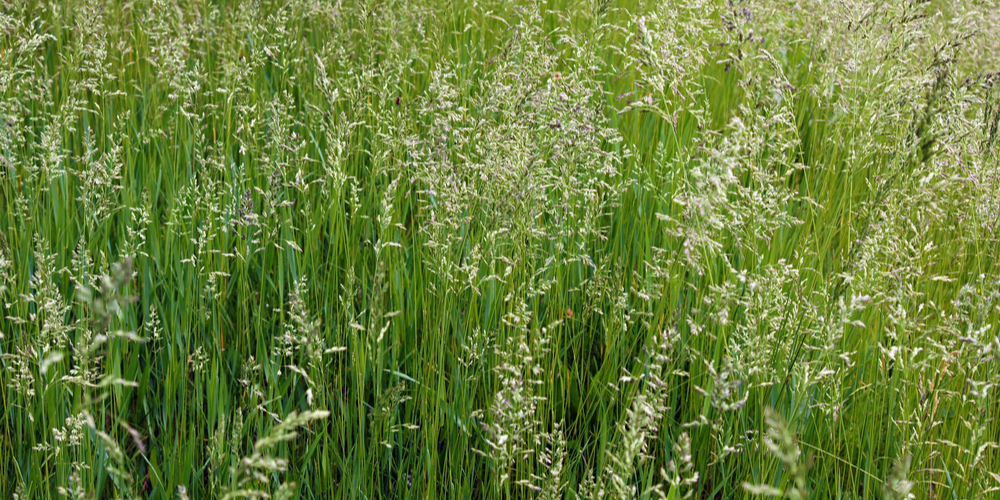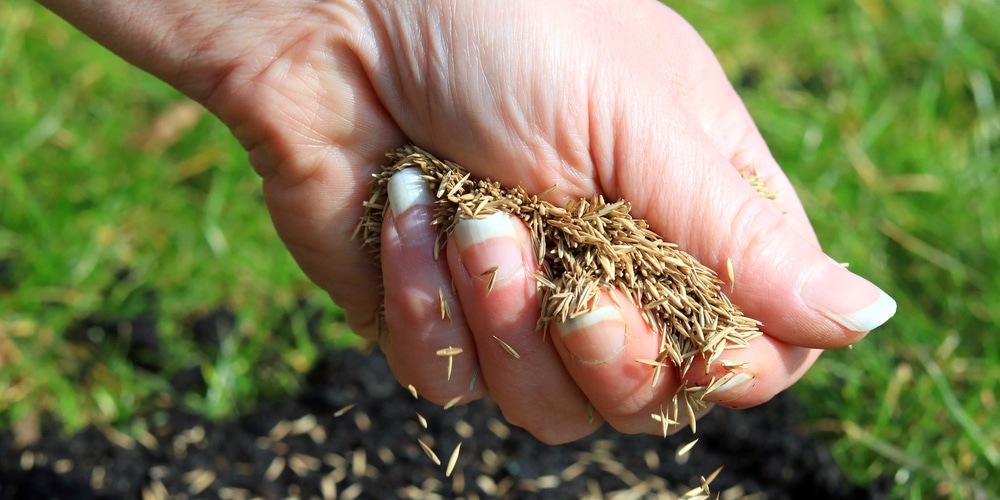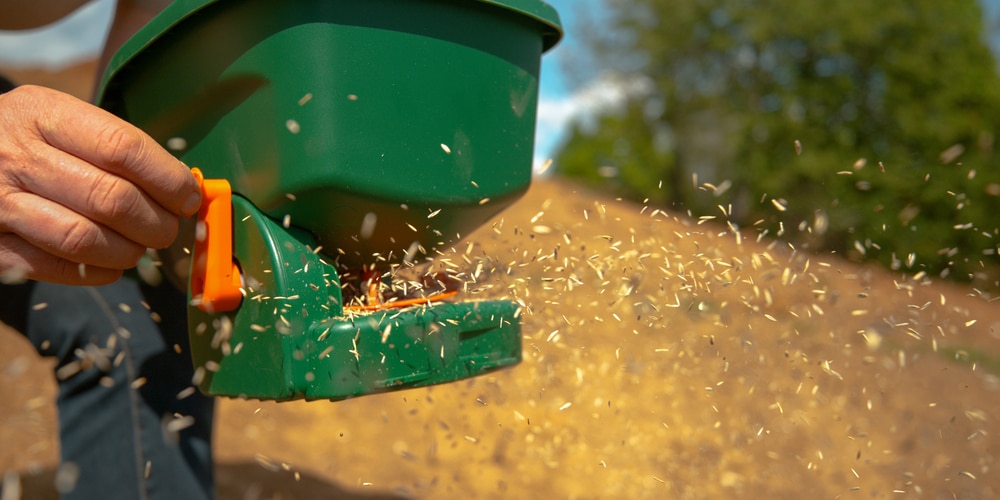Looking to install a new lawn? There will be a variety of factors and choices that go into the process. One of those choices is which grass seed is better: coated or uncoated? In this article, we will be exploring the pros and cons of Kentucky 31 Tall Fescue coated vs uncoated, so that you can make the best decision for your lawn.
Fescue Grass: Kentucky 31 Tall Fescue

Fescue grasses are cool-season grasses, which makes them grow best in daytime environmental temperatures ranging from 60°F to 75°F. The nighttime air temperatures should be in the mid-50s for such grass to do well.
Fescue grasses a rather drought-tolerant, thanks to their long roots that reach deeper into the soil for water and nutrients. As such, these grasses are typically ideal choices for less irrigated lawns.
Kentucky 31, also known as KY-31, is a certain type of tall fescue that is particularly well-adapted to withstand drought conditions. With deep roots and thick, dense green blades, this grass can provide a beautiful, luxurious look even to lawns that might not receive a lot of water.
The coarse blades of this grass are often the reason it’s mistaken for a weed. This is especially true if it gets into a lawn without you being the one who introduced it.
Coated KY-31 Seed
Now that you know a bit more about KY-31, let’s take a look at what it means to buy coated KY-31 seeds.
When seeds are coated, a layer of material is added to the seed. The coating is beneficial to the germination process, especially in drier areas. That’s in consideration that the coating helps to hold moisture in, giving the seed the best chance to germinate.
If you don’t water your seeds enough and they begin to dry before germination, they will more than likely die. That’s mainly due to the fact that they lack moisture reservation tactics, unlike plants.
Seed coatings work by facilitating the penetration of water into the coating, and preventing the water from seeping out. The coating often has fertilizer and/or fungicide to further increase the chances of successful germination and growth.
Pros
Some of the main advantages of using coated KY-31 seeds include:
1. Fertilizer: Some seed coatings also contain fertilizer, which can help to give your grass a boost as it begins to grow.
2. More uniform germination: Coated seeds will often germinate more uniformly than uncoated seeds, meaning that you are less likely to have patches of grass that don’t grow in.
3. More efficient broadcasting: Bearing more uniform and slightly larger sizes makes it easier to spread the seeds evenly over your lawn. Besides, the coloring of coated grass seeds makes it easier to know where you’ve applied the seed in large fields.
4. Increased chances of germination: By holding moisture in, coated seeds have a better chance of germinating than uncoated seeds.
5. Increased protection from disease: Some seed coatings also contain fungicide, which can help to protect your grass from disease.
Cons
Some of the main disadvantages of using coated KY-31 seeds include:
1. Cost: Coated seeds are cheaper per pound compared to uncoated ones. But why? You’re getting more coating material per pound and less seed. In the end, it will cost more to achieve the same goal of a new lawn.
2. Not ideal for clay soils: The additional clay in the coating can cause problems when planting in clay soils. The clay can bind together, affecting breathability and drainage.
3. Adds a number of substances to your soil: If retaining your soil composition and purity is a key consideration, then you might want to avoid coated seeds. The coatings can add a number of different substances to your soil that might not be ideal.
Uncoated KY-31 Seed
Uncoated grass seeds, on the other hand, don’t have any type of coating material added to them. They are simply the naked seed that you would find in the grass plant.
Pros
Some of the main advantages of using uncoated seeds include:
1. Cost: Uncoated seeds are cheaper per pound compared to the coated ones, since you’re simply getting the seed with no coating material added.
2. Better for clay soils: Since there’s no coating material added to uncoated seeds, they are better for planting in clay soils.
3. No extra synthetic substances: If you want to avoid adding any extra synthetic substances to your soil, then uncoated seeds are the way to go.
Cons
The main disadvantages of uncoated seeds are simply the fact that you won’t enjoy the benefits that the coatings provide. These include:
1. Reduced germination rates: Uncoated seeds have reduced germination rates in drier regions compared to coated ones since they lack the moisture-retaining benefits of the coatings.
2. Reduced protection from disease: Without a coating, uncoated seeds are more susceptible to disease.
3. Inefficient broadcasting: Uncoated seeds are often smaller and more irregular in shape, making them more difficult to spread evenly over your lawn.
4. Difficulty knowing where you’ve seeded: The natural color of uncoated seeds can make it difficult to know where you’ve applied them in large fields. This is especially true if the seeds are very small.
5. No fertilizer boost: Without a coating, uncoated seeds won’t have any fertilizer added to them. This means that you’ll need to fertilize your lawn manually.
Verdict: Kentucky 31 Tall Fescue Coated vs Uncoated
There is no easy answer as to whether coated or uncoated seeds are better. It really depends on the following factors:
- Property size: If you have a large lawn, then the increased efficiency of broadcasting that comes with coated seeds might be worth the extra cost.
- Climate: If you live in a drier region, the increased germination rates of coated seeds might be worth the extra cost.
- Watering ability: If you can water your lawn regularly, the increased germination rates of coated seeds might not be as big of a consideration.
- Soil type: If you have clay soil, the increased drainage and breathability of uncoated seeds might be worth the reduced germination rates.
- Synthetics: If you’re concerned about adding any extra synthetic substances to your soil, then uncoated seeds are probably the way to go.
In the end, it really depends on your specific situation as to which type of seed is better for you. If you’re not sure, talk to your local nursery or seed dealer to get their opinion on which type of seed would be best for your lawn.
Happy planting!

